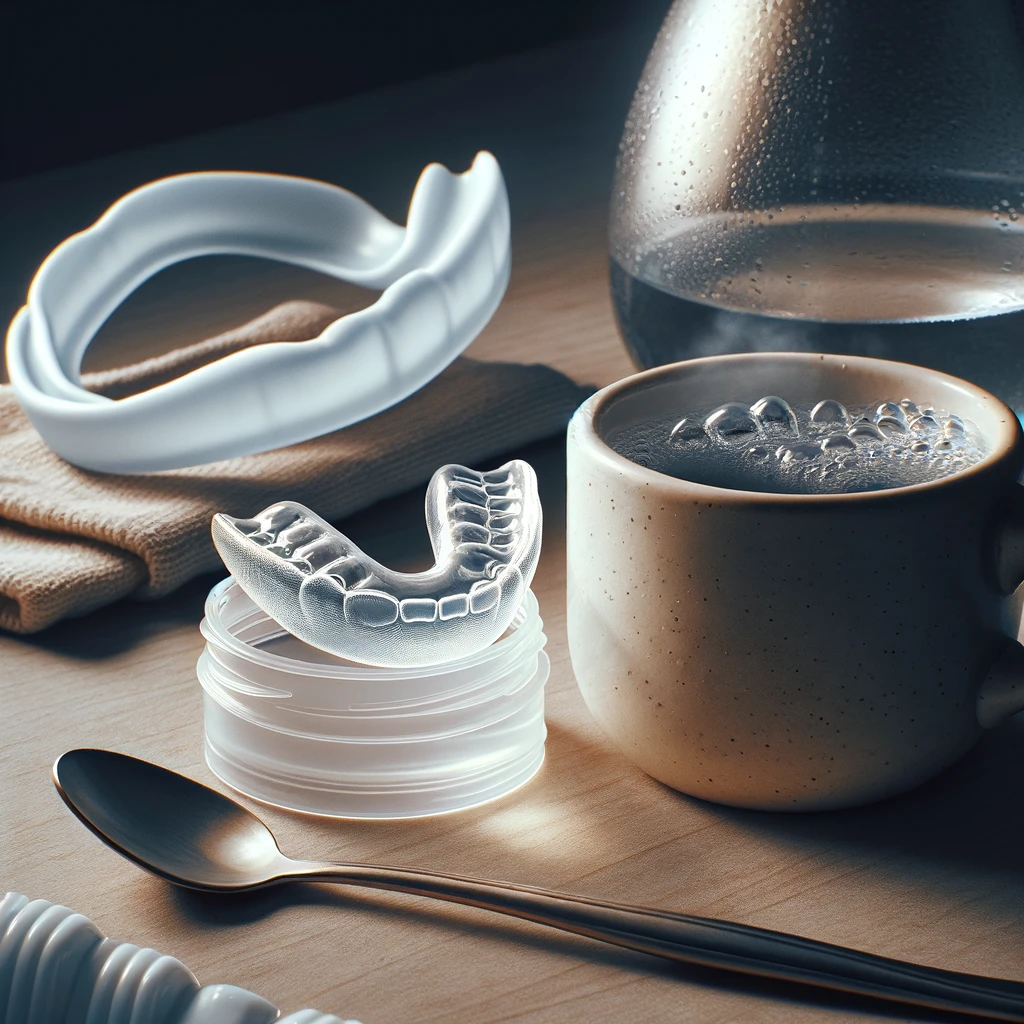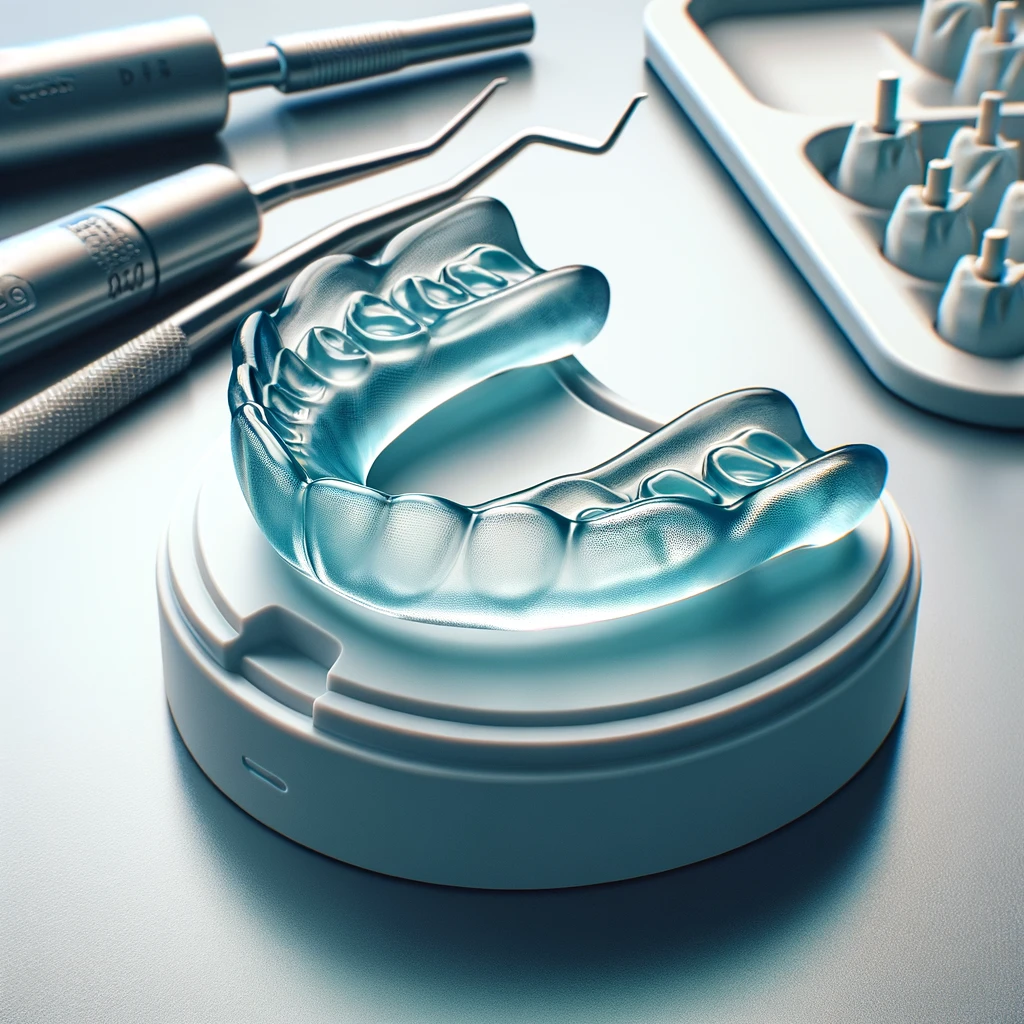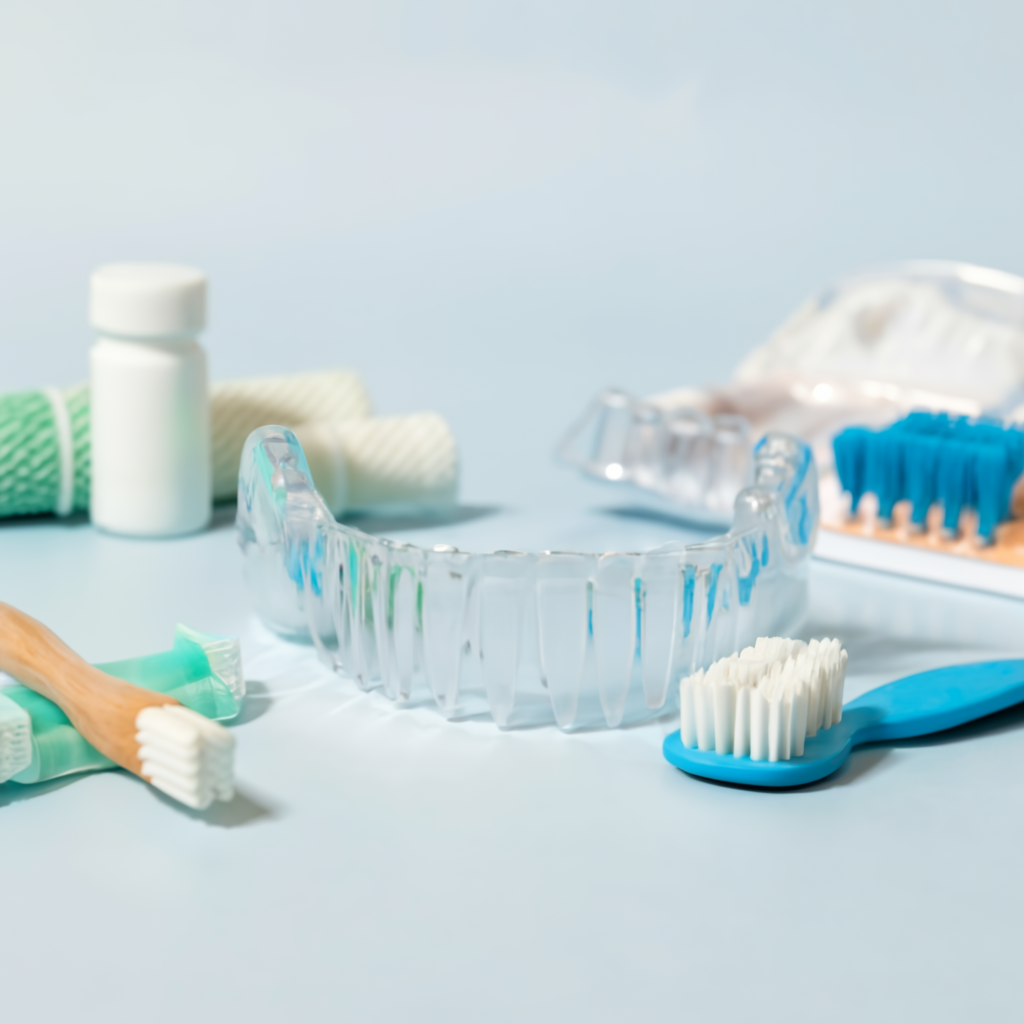Mouthguard Guide for Athletes with Braces
Wearing a mouthguard in contact sports is essential
Especially for athletes with braces. The stakes are higher for those undergoing orthodontic treatment, as impacts can cause not only damage to the braces but also severe injuries to the teeth, jaw, and soft tissues. A mouthguard acts as a protective barrier, absorbing and dispersing the force of blows, thereby minimizing the risk of dental injuries. It’s not just about safeguarding your orthodontic progress—it’s about ensuring you can play your best, worry-free. Let’s dive into why choosing the right mouthguard is crucial and how to maintain it for optimal protection.
Types of mouthguards
When it comes to protecting your teeth during sports activities, especially if you’re undergoing orthodontic treatment, understanding the different types of mouthguards available is crucial. Each type offers unique features and levels of protection suited to various needs and preferences.
Boil and bite mouthguards

- Available at most sports stores and pharmacies, boil and bite mouthguards offer a convenient and accessible option for athletes with braces. They are heated in water and then placed in the mouth to form a mold around the teeth and braces, providing a custom fit.
- These mouthguards are readily available at sports stores or pharmacies, making them a convenient option for immediate use.
- You heat them in water and then bite into the softened material, allowing it to mould to the shape of your teeth and braces.
- Choose a version specifically designed for braces to ensure there’s enough room for both protection and comfort. Standard models may not accommodate the brackets and wires properly.
- As your teeth move during orthodontic treatment, you may need to remould the mouthguard. Follow the manufacturer’s instructions for reheating and reshaping to ensure continued fit and protection.
Custom-fitted mouthguards

Custom-fitted mouthguards are made by dental professionals based on an impression of your teeth. This process ensures a precise fit tailored to your mouth’s unique shape, offering optimal protection and comfort.
- Process: Custom-fitted mouthguards are precisely made from an impression of your teeth, taken by a dental professional. This bespoke approach ensures that the mouthguard conforms exactly to your mouth’s shape, providing unparalleled comfort and protection. The process involves visiting a dentist or orthodontist, who will take a detailed mould of your teeth. This mould is then used to create a mouthguard that fits your oral cavity perfectly, accounting for every tooth and curve.
- Consideration: While custom-fitted mouthguards offer the best fit and protection, they may not always be the ideal choice for individuals undergoing orthodontic treatment. The reason lies in their inability to be adjusted or remoulded. As braces work to gradually shift and align teeth, the shape of your mouth changes over time. A mouthguard that fit perfectly at the start of the season might not fit as well a few months later, necessitating a new impression and mouthguard. This can be both impractical and costly, especially for those in the active phases of their orthodontic journey.
Mouthguard comparison
When deciding on the best mouthguard for sports, especially for those wearing braces, understanding the differences between available options is key. This comparison aims to highlight the distinct features, benefits, and considerations of each type of mouthguard, helping you make an informed choice that best suits your needs and ensures maximum protection for your teeth.
| Feature | Boil and bite mouthguards | Custom-fitted mouthguards |
|---|---|---|
| Accessibility | Widely available at sports stores and pharmacies | Made by dental professionals, requires a dental visit |
| Process | Heated in water, then moulded to teeth by biting down | Created from a dental impression for a precise fit |
| Consideration | Must be specifically designed for braces for proper fit and protection | Offers the best fit and protection but cannot be remoulded |
| Maintenance | Can be remoulded to adjust for teeth movement | New impressions and mouthguards needed as teeth move |
Selecting your mouthguard
When engaging in sports, especially with braces, choosing the right mouthguard is essential for optimal protection. Here’s what you need to consider:
Factors to consider with braces
Choosing the right mouthguard when you have braces involves more than just picking one off the shelf. There are specific factors to consider that ensure your mouthguard not only fits comfortably but also provides the necessary protection without interfering with your orthodontic treatment. Let’s explore these crucial considerations to help you select a mouthguard that aligns with your braces, activities, and overall dental health objectives.
- Extra room for brackets: Ensure the mouthguard provides ample space to fit comfortably over your braces, protecting your orthodontic appliances from damage.
- Ability to remould: Choose a mouthguard that can be adjusted as your teeth move during orthodontic treatment, ensuring a perfect fit throughout the process.
- Level of protection: Opt for a mouthguard that effectively absorbs and distributes impact forces, safeguarding your teeth, gums, cheeks, and lips—especially important for those with braces.
Recommendations for high-risk sports
- Hockey: The risk of injury from high-speed pucks and sticks demands robust protection.
- Rugby: Due to its physical nature, including tackles and scrums, a mouthguard that can withstand heavy impacts is crucial.
- Football: For both Australian rules and soccer, the potential for collisions necessitates a high-quality mouthguard to protect against injuries.
Selecting a mouthguard that meets these considerations will not only help protect your orthodontic investment but also ensure you can participate in your favorite sports safely. Always consult with your orthodontist or dentist to find the mouthguard that best suits your specific needs and the demands of the sports you play.
Insurance and mouthguard coverage
Understanding the nuances of sports insurance and health benefits is crucial for Australian athletes, especially when it involves mouthguard coverage. With the unique landscape of Australian sports and healthcare systems, it’s important to know how your insurance policies can support the costs associated with acquiring a mouthguard, particularly for those undergoing orthodontic treatment. This guide is designed to navigate you through the essential considerations of sport and health insurance coverage for mouthguards down under, aiming to help you make well-informed choices and maximise your entitlements.
Sport insurance considerations
Check your sport’s insurance policies to ensure mouthguard compliance for eligibility. Many organizations mandate specific types or qualities of mouthguards for coverage in case of dental injuries during play.
Health insurance benefits
Many health insurance plans cover the cost of mouthguards, recognizing them as preventative measures against costly dental injuries. Maximizing these benefits can significantly reduce out-of-pocket expenses for both standard and custom-fitted mouthguards.
It’s wise to review your insurance details or consult with your provider to understand the coverage available for mouthguards, ensuring you’re both protected on the field and financially savvy off it.
Post-braces considerations
After the braces come off, it’s an exciting time, marking the end of a significant journey in orthodontic treatment. However, the care for your teeth doesn’t stop here; it evolves, especially when it comes to protection during sports and activities.
Transitioning to a new mouthguard
Once your braces are removed, your old mouthguard will likely no longer fit due to the changes in your teeth’s alignment and structure. It’s essential to get a new mouthguard that matches your new dental configuration. This ensures continued protection for your teeth during sports or any physical activities.
Importance of not using retainers as mouthguards
Retainers are designed to keep your teeth in place after braces and are not substitutes for mouthguards. They’re made from thinner material and don’t offer the protection against impacts that mouthguards do. Using a retainer instead of a mouthguard can lead to dental injuries and may also damage the retainer.
Recommendations for maintaining and protecting teeth post-orthodontic treatment
- Regular dental check-ups: Continue with your regular dental visits to monitor the health of your teeth and gums.
- Proper hygiene: Maintain a rigorous oral hygiene routine with brushing, flossing, and using mouthwash to keep your teeth strong and healthy.
- Wear a mouthguard: For any sports or activities that pose a risk to your teeth, wearing a properly fitted mouthguard is crucial to protect your post-orthodontic smile.
- Follow retainer guidelines: Use your retainer as directed by your orthodontist to ensure your teeth stay in their new positions.
Taking these steps will help safeguard the results of your orthodontic treatment, keeping your smile looking great for years to come.
Care and maintenance of mouthguards
Keeping your mouthguard clean and well-maintained is key to your oral protection. Follow these tips for optimal care:
Cleaning & storing properly
- After use: Rinse with cool water and gently brush. Occasionally, use mild soap or a cleaner, then rinse well.
- Dry it out: Let it air dry completely before storing to avoid bacteria.
- Safe storage: Keep it in a ventilated, firm case. Protect it from extreme temperatures to prevent warping.
When to replace
- Wear signs: Look out for tears or holes, and replace if you find any.
- Fit check: If it feels loose or uncomfortable, it’s time for a new one.
- Regular updates: Ideally, get a new mouthguard each sports season or yearly, depending on use.
Conclusion
Mouthguards are indispensable in protecting the dental health of athletes with braces.
Protect your smile
Participating in sports exposes you to the risk of dental injuries. Wearing a mouthguard is crucial to safeguard your teeth and the investment you’ve made in your orthodontic treatment.
Seek expert advice
Because everyone’s dental structure is unique, it’s important to consult with an orthodontist for personalized advice and fitting of your mouthguard. They can provide recommendations tailored to your specific needs and the sports you engage in.
Remember: The right mouthguard not only protects your dental health during sports but also preserves your smile for the future.


